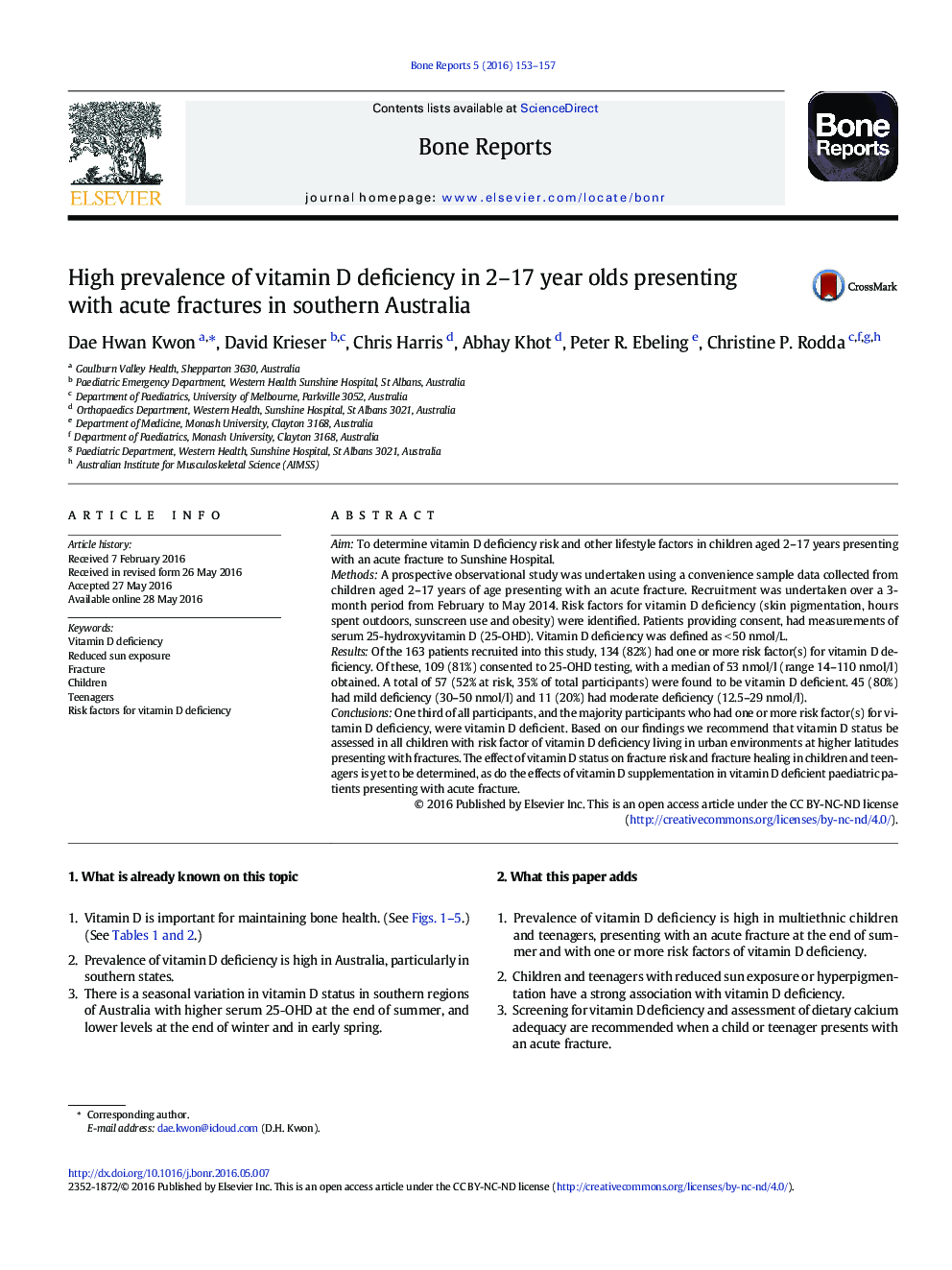| کد مقاله | کد نشریه | سال انتشار | مقاله انگلیسی | نسخه تمام متن |
|---|---|---|---|---|
| 2792314 | 1568667 | 2016 | 5 صفحه PDF | دانلود رایگان |
• Prevalence of vitamin D deficiency is high in multiethnic children, presenting with fracture with risk factor(s) of vitamin D deficiency.
• Reduced sun exposure or hyperpigmentation have a strong association with vitamin D deficiency.
• Screening for vitamin D deficiency and assessment of dietary calcium adequacy are recommended when a child or teenager presents with an acute fracture.
AimTo determine vitamin D deficiency risk and other lifestyle factors in children aged 2–17 years presenting with an acute fracture to Sunshine Hospital.MethodsA prospective observational study was undertaken using a convenience sample data collected from children aged 2–17 years of age presenting with an acute fracture. Recruitment was undertaken over a 3-month period from February to May 2014. Risk factors for vitamin D deficiency (skin pigmentation, hours spent outdoors, sunscreen use and obesity) were identified. Patients providing consent, had measurements of serum 25-hydroxyvitamin D (25-OHD). Vitamin D deficiency was defined as < 50 nmol/L.ResultsOf the 163 patients recruited into this study, 134 (82%) had one or more risk factor(s) for vitamin D deficiency. Of these, 109 (81%) consented to 25-OHD testing, with a median of 53 nmol/l (range 14–110 nmol/l) obtained. A total of 57 (52% at risk, 35% of total participants) were found to be vitamin D deficient. 45 (80%) had mild deficiency (30–50 nmol/l) and 11 (20%) had moderate deficiency (12.5–29 nmol/l).ConclusionsOne third of all participants, and the majority participants who had one or more risk factor(s) for vitamin D deficiency, were vitamin D deficient. Based on our findings we recommend that vitamin D status be assessed in all children with risk factor of vitamin D deficiency living in urban environments at higher latitudes presenting with fractures. The effect of vitamin D status on fracture risk and fracture healing in children and teenagers is yet to be determined, as do the effects of vitamin D supplementation in vitamin D deficient paediatric patients presenting with acute fracture.
Journal: Bone Reports - Volume 5, December 2016, Pages 153–157
